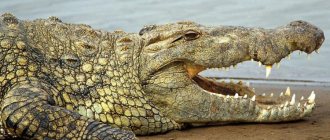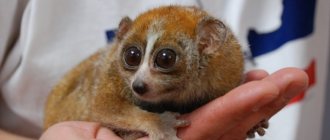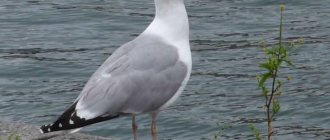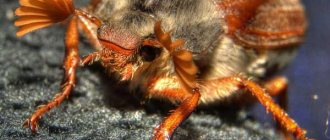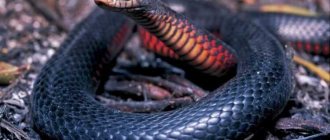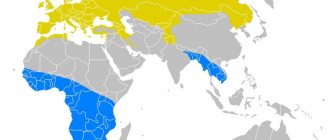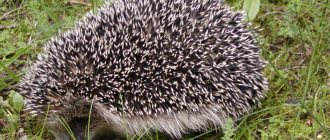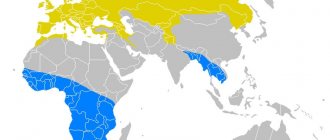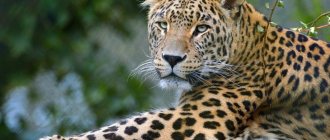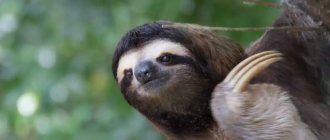If many have not seen this large insect, they have probably heard of it. With the onset of spring warmth, clouds of beetles circle above the flowering trees with a loud buzzing sound. One of the most malicious pests, which can be combated using a variety of methods. Voracious insects and their offspring are capable of destroying plantings over vast areas in the shortest possible time. The population multiplies rapidly, regardless of region or weather conditions.
The time of May beetles is May and April, this is the most active time for their life activity, hence the name. During this period, pests actively eat the pulp of flowering buds and soft young leaves, destroying trees, shrubs, and all flowering plants. Large individuals are capable of destroying young trees, eating not only leaves, bark and branches.
Chafer
The cockchafer belongs to the order of Coleoptera insects. There are two types: brown and black. Most of us are familiar with them by their characteristic glossy shiny brown shell on the back. Another common arthropod insect is called Khrushchev.
May beetle and its larva: photo and description
What does a cockchafer look like? An insect from the large category, sometimes reaching a length of 3 - 3.5 cm. A wide body, with a convex hard shell. The shape is oval, slightly elongated, with slight pubescence.
During the spring-summer season, irreparable damage is caused by the rather large larva of the cockchafer; it looks unattractive and even menacing. At first glance, these are fat, milky-white caterpillars, twisted into a ring, with a small brown head and a slightly pubescent body. After two years, they already reach enormous sizes, up to 6 - 6.5 cm. Three pairs of legs are located on the front, and the head has powerful jaws.
May beetle larva
In the garden, insects develop from the larval stage to adult ones and cause irreparable damage to plantings. The main diet is the measles system of any vegetables, berry bushes, and cereals. Thanks to their unique gluttony, the larvae destroy a huge crop area in a short time.
When they enter the pupal stage, they become similar to adults. Located at a great depth, up to 30-50 cm, they can develop safely and safely. Hatches in spring when the ground is completely warm. The description of the cockchafer larva changes throughout its life. 3-4 years is the period during which they are fully formed.
So, 5 advantages of eating insects
Insects grow and reproduce quickly
This plus is more important from a global environmental point of view. Thanks to this ability, you can quickly, and most importantly, get a lot of food at minimal cost.
Compared to plants, insects do not have many poisonous species that are dangerous to humans
Most insects are absolutely harmless to humans if eaten. True, as in any case, this also has its exceptions. For example, in our country representatives of the genus Narynniki (lat. Meloidae) are poisonous. Therefore, of course, you can’t eat everyone, but you can eat a lot of them.
They are nutritious and even tasty
Since insects are, in principle, not so far from crustaceans, their taste is similar. And crayfish meat is considered a delicacy in our country. So on the taste side it’s not all that bad.
We do not digest chitin; it is absolutely useless for us in terms of nutrition, so caterpillars are often used as food.
Entomophagy is quite natural for us
We have all been doing ENTOMOPHAGY . How? How? Entomophagy is the eating of insects. And here I would like to remember the wonderful saying: “It’s not pleasant when you bite off an apple and there’s a worm there. But it’s even more unpleasant when you take a bite, and there’s half a worm!”
It is estimated that the average European eats about 300 g of insects per year. For example, with raspberries, summer residents often eat small white insect larvae. They are not dangerous to human health, but they are still unpleasant to eat.
Wormy raspberries are a “traditional snack” for residents of the middle zone.
But most of all insects in our middle zone are eaten by summer residents along with mushrooms. “Mushroom worms” are the larvae of insects, usually dipterans.
Wormy mushroom stem.
Insect cuisine is very diverse
Traditional insect cuisine exists in Central and South America, Australia, Africa, South and East Asia. Traditional entomophagy is found in more than 100 countries around the world.
Poisonous scabiosae blister (Hycleus scabiosae)
Beetles of
the Meloidae are quite noticeable and look aggressive, warning everyone who wants to eat them of their poisonous nature. The pattern of the elytra is almost always cross-striped or with transverse rows of spots. The wings are developed. They got their name due to the caustic substance cantharidin contained in the integument, which causes abscesses on the skin.
Characteristics of the cockchafer
Visually, all types look the same.
- Head. The eyes have a complex structure and consist of many simple ocelli. In front there are plate-shaped mustaches resembling a fan. In males they are more pronounced than in females. The insect can only tilt its head, but is not able to turn it.
- Breast. Each part has a pair of legs. The wings are located on the front and back.
- Abdomen. Connects to the thoracic region. The fenders completely cover the upper part.
Reference! On European territory there are two types of Khrushchev: eastern and western.
The size of the beetle changes as it grows and sometimes reaches 3.2 - 3.8 cm. The shape is oval, the color resembles an acorn.
The coloring of body parts depends on the species. Black beetles live in dense forests, in places with insufficient sunlight. Redheads prefer regions with limited vegetation.
The weight of the cockchafer reaches 10 g. Despite their overall dimensions, they are capable of flying over fairly long distances, covering 30 meters in a minute. Usually their active activity is noticeable in the evening.
The size of the cockchafer larva varies depending on age. When they hatch, they resemble small little worms. After 3 years they look like huge and fat white caterpillars. In the last stages of life they reach sizes of 6-6.5 cm. This is the most active period when pests can cause significant harm to plantings.
More traditional insect dishes
Casu marzu cheese, or wormy cheese from Sardinia
Translated from Sardinian, casu marzu literally means rotten cheese . Its other names: casu modde, casu cundhídu, casu frazigu .
Casa marzu is made from regular Sardinian pecorino, but is aged longer. The larvae of the cheese fly accelerate the process of decomposition and breakdown of the fats contained in the cheese, which is why the cheese becomes soft and a liquid called lagrima (“tear”) is released from it. This gives the cheese an unusual taste.
Sardinian wormy cheese - casu marzu.
The larvae, when disturbed, are able to jump up to 15 cm. For this reason, those who want to taste the delicacy while eating are better off wearing glasses in advance or removing the larvae. In addition, kasa marza needs to be chewed very carefully so that there are no unpleasant consequences later. Possible parasitism of larvae in the human intestines and allergic reactions. In general, this is not an easy meal for an unprepared gastrotourist.
By the way, you can only try this cheese in Sardinia, since, according to epidemiological regulations, it is prohibited to transport it across the border.
Cheese Mimolette, or cheese with mites from France
Traditionally produced in the vicinity of Lille in France, where it is known as Boule de Lille - "Lille ball", and in Flanders - vieux Hollande - "old cheese".
In this case, during ripening, a population of cheese mites settle on the surface of the cheese, which gnaw passages in the rind and affect the taste: a special bitterish tint is obtained in the fruity taste.
French cheese with mites Mimolet.
This cheese is considered safer to eat than Sardinian cheese. However, since April 2013, Mimolet has been banned from import into the United States as “unfit for consumption because it may cause allergies.” Earlier, in 2012, 60 tons of this cheese were imported to the United States.
Read more about Mimolet cheese at Gastromom.ru
What do cockchafers eat?
The most delicious delicacies are the young leaves of fruit trees and berry bushes. The adult cockchafer also feeds on non-fruit trees.
In the first year of life, the larvae are practically harmless; they eat only plant waste - humus. By the second and third years, they gain significant strength and their appetites increase.
Advice! For effective control, it is enough to sow the area with white clover. The plant produces nitrogen, which is harmful to the offspring of beetles.
The larva of the cockchafer feeds on the roots of vegetables, strawberries, raspberries, and flowers. A special treat for them is potato tubers. They are capable of eating away potato pulp over large areas and destroying young trees and shrubs. Three-year-old larvae can eat the roots of a two-year-old tree within 24 hours.
What other insects are eaten in different countries of the world?
OS
In Japan, they eat "hebo" - a local delicacy based on black wasps from the genera Vespula and Dolichovespula and rice, in a special sauce. Considered a delicacy. Wasp nests with larvae are sold in Japanese markets, and they are imported into Japan from China, Vietnam, South Korea and New Zealand.
There is even a special festival dedicated to Hebo, which is held annually in Gifu Prefecture. The festival sells wasp nests for those who want to make their own at home. You can try ready-made wasp dishes right at the festival: fried wasps, wasps in chocolate, fried hornets (a good snack for beer), wasps with rice.
Hachinoko is a dish of bee larvae boiled with soy sauce and sugar.
What do we have?
Muravyov
In East Asia, weaver ants are eaten as larvae and pupae (Oecophylla spp.).
In Colombia, Mexico and other Latin countries, a dish is prepared from female leaf-cutter ants (Atta).
Survival experts advise those lost in the forest to eat ants, BUT without cooking, you can only eat ants’ eggs or eggs; you can eat the ants themselves only after you’ve boiled them. This neutralizes not only parasites whose intermediate hosts are ants, but also formic acid.
Mexican set for preparing a traditional dish.
Butterflies, but more often their caterpillars
Most often, butterflies are eaten as caterpillars. However, quite often adult insects are also eaten.
In Africa, they eat mopane caterpillars with onions (caterpillars of moths Gonimbrasia belina).
Interestingly, France imports 5 tons of fried caterpillars per year, and Belgium - 3 tons. Africans (mostly residents of the Congo) who moved to live in Europe do not want to give up the traditional delicacy.
Locusts, grasshoppers and crickets
Eaten all over the world (Asia, Africa, South America)
Fried crickets.
Stink bugs
In southern Africa, stink bugs of the family Pentatomidae are eaten.
Bedbug eggs
In Mexico, eggs of freshwater bugs (families Corixidae and Notonectidae) are used as food.
Another poisonous representative of the blister genus: Purple, or blue, (Meloe violaceus). It’s not that you can’t eat them, you shouldn’t even touch them.
Bark beetle larvae are also considered quite edible for humans.
The benefits and harms of the cockchafer
Insects can cause irreparable damage to plants in a short time. Moreover, if adult individuals eat the aerial parts: leaves, buds, catkins on conifers, then the harm from the larvae is much more widespread. They completely destroy the root system, and the plants have virtually no chance of recovery.
Reference! It is very common to use beetles and larvae in fishing as bait.
There are some benefits too. In folk medicine, recipes using them for treatment are quite popular:
- purulent processes;
- tuberculosis;
- injuries;
- radiculitis;
- scrofula;
- impotence.
There are known cases of positive reactions after the use of such drugs for cancer.
The future of entomophagy, or when will we really start eating insects in huge quantities?
Of course, for many Europeans who have now read this material, even the very thought that they will someday eat insects or their larvae is not pleasant. It is unlikely that a European, like an Asian, will eat fried cockroaches or scorpions, unless on vacation, as an exotic thing for the camera.
However, on an industrial scale, raising insects for processing is quite justified economically and socially. Therefore, very soon enterprises will start operating where they will grow insects and their larvae, which will then process and produce insect “meat”, insect flour or some other interesting products with a quite decent taste and quite pleasant to look at.
How to deal with the cockchafer
It is recommended to apply medications against the cockchafer early in the morning or in the evening. Do not process in direct sunlight. In dry weather, with insufficient soil moisture, after treatment the soil is watered abundantly.
Popular protection against cockchafers using folk methods:
- mechanical digging of soil using a shovel bayonet;
- sodding (planting green manure);
- treatment with infusion of onion and garlic;
- sowing lupine.
Advice! For prevention, plant garlic in the habitats of beetles and their offspring. The smell repels insects.
A remedy with ammonia tested in the garden helps a lot. Add 100 g of table salt and 2 tablespoons of alcohol to a bucket of water. They water the soil during the flowering period of potatoes and for preventive purposes.
On strawberries and raspberries, for preventative purposes in the spring, a solution of water and ammonia (10 liters of water and 20 ml of ammonia) is spilled between the rows. Treatment with insecticides and traditional methods are also effective: infusions of onion peels are thoroughly poured onto each bush.
Advice! Traps are prepared for adult beetles. Containers with kerosene are placed in a well-lit area at night.
To reduce the population of insects, trees and bushes are manually shaken off in the evening and burned. Khrushchi are afraid of the smell of elderberries and flowering cruciferous vegetables: turnips, turnips. By planting the area with these plants, you can be sure that pests will not fly into this area.
How to get rid of cockchafer larvae
The fight against cockchafer larvae involves an integrated approach. From autumn and throughout the growing season, it is necessary to carefully dig and deeply loosen the soil. Eggs, larvae and cocoons, subjected to regular mechanical stress, are injured and die.
You can get rid of larvae with a guarantee using chemicals. There are many remedies for cockchafer larvae. Among the most popular insecticides are Bazudin, Zemlin, Aktara. The biological agent Nemabakt guarantees the destruction of larvae in the ground within a few days without harm to health and plantings. A popular effective remedy offered by the industry, Antikhrushch is characterized as an effective way to fight in a short time.
Sow the affected areas with lupine. Weeds do not grow in such an area. The larvae in the ground, forced to feed on lupine roots, die. The soil is treated with chlorine solution: 0.5 l. add 100 g of chlorine to water. Water as carefully as possible, between rows, so as not to damage the roots of the plants.
Ammonia for larvae is effective when used regularly. Places where traces of damage are noticed are generously shed with ammonia solution. The procedure is carried out with the onset of warm weather and just before the onset of frost, trying to avoid getting the composition on the plants.
It is effective to use iodine (add 10-15 drops of iodine to 10 liters of water), pour the affected areas with this solution throughout the summer. After watering, the soil must be deeply loosened. In the spring, make deep, up to 40-50 cm, furrows in the beds and water them with a solution of Karbofos or Decis. The larvae die within a few days.
Advice! The use of preparations containing chlorine for soil treatment is effective. This is how the familiar Whiteness is used in practice.
You can fight without using aggressive chemicals, using folk remedies. For this purpose, garlic and onion peels are traditionally used for infusion. A concentrated solution is prepared in a bucket and kept for 3-5 days. Dilute with water 1:1 and add 1 liter. under each bush.
You can remove cockchafer larvae by burying rotten fish or herring in the ground, not far from the affected areas.
An effective method has been tested in practice: manure traps. In the fall, deep holes, up to 1 m deep, are dug in the garden and filled with fresh manure. The larvae will definitely choose this cozy place for wintering. All that remains is to dig everything up in the spring and destroy it.
If gardeners do not want to poison pests with chemicals, they are collected manually by digging. This method does not guarantee results.
It is not recommended to leave old stumps and thickets of herbaceous plants at the dacha. By uprooting them, you can find entire colonies of larvae. Among the effective preparations, Prestige is noted; it is used to treat the roots of seedlings and potato tubers before planting.
To combat larvae, ammonia is used in the soil under raspberries and roses: 10 ml per 10 liters of water. The soil is watered abundantly twice during the spring-summer period.
You can process strawberries, a special treat for the larvae, in any suitable way. If folk remedies do not help, it is worth transplanting it to another area, having previously treated the soil and making sure that there are no pests there. Dig up the previous place and sprinkle with bleach.
In areas where pest colonies have been observed, the soil is cultivated especially carefully. If it is possible not to sow the area next year, it is better to carry out complex treatment for preventive purposes.
Living at home
Experimenters are trying to provide conditions for the beetle to live. The most common method is a box with plucked grass, but from the above it is clear that these conditions are not suitable for the beetle to live. And whether they eat simple grass is unclear. Experienced naturalists recommend placing the insect in a pot with garden soil.
An adult insect will live for a maximum of a week; they live in freedom for 1.5 months during the active mating season, which begins on May evenings, in dry weather.
During this period, females lay 60-90 eggs and, having laid the last clutch, die. Males die earlier, having completed the function of fertilization. But the larva, gradually growing, lives much longer. Pests feed well, but are they eaten by other living creatures?
What other additional materials on the topic can you look at?
- Food and Agriculture Organization (FAO) Study: “Edible Insects: Prospects for Food and Feed Security”: https://www.fao.org/home/en
- A complete list of insect species eaten by different peoples of the world , compiled by the Laboratory of Entomology of Wageningen University (Wageningen Universiteit en Researchcentrum): https://www.wur.nl/en/Research-Results/Chair-groups/Plant-Sciences/Laboratory-of -Entomology/Edible-insects/Worldwide-species-list.htm
- ARHE YouTube channel “Everything is bullshit except the bees”
- Article on polit.ru about edible insects
- Article about eating insects for survival on lastday.club
External structure
Khrushchi are no different from other representatives of Coleoptera. Therefore, the structure of cockchafers is similar to other insects from this order:
- the head, on which the eyes, antennae and mouthparts are located;
- thoracic region of 3 segments, a pair of legs is attached to each segment;
- abdomen of 8 segments.
All functions of insect movement are performed by the thoracic region. There are 3 pairs of legs attached to it below, and 2 pairs of wings on top.
Interesting!
The rigid elytra are actually a modified first pair of wings. The real pair of cockchafer wings is quite small and has difficulty lifting its host into the air. The flight occurs with a low humming sound. Raised elytra do not add aerodynamics to the cockchafer. The flight is clumsy and the speed is low. Therefore, myths about the accumulation of electricity by the cockchafer in flight did not arise. Since the cockchafer flies poorly, it rises into the air to find a pair for mating or to fly to the nearest tasty plant.
Internal structure
The internal life support systems of the cockchafer include:
- digestive system;
- respiratory system;
- excretory system;
- reproductive organs;
- primitive circulatory system;
- primitive nervous system.
The structure of the May beetle
The circulatory system consists only of a dorsal vessel, passing along the central axis of the beetle and “suspended” to the upper part of the chitinous skeleton. 3 primitive hearts are located in the abdomen of the insect.
The central nervous system includes:
- the brain, consisting of two nodes of the suprapharyngeal ganglion;
- peripharyngeal connectives;
- ventral nerve cord.
The first two nodes are in the head, the rest in the torso.
The digestive system consists of the foregut, midgut and hindgut. In the first two sections, the insect assimilates food, the last is responsible for excrement and water exchange.
On a note!
The respiratory system consists of 18 tracheae, the spiracles of which extend to the lower parts of the chest and abdomen. A large number of spiracles provide the cockchafer with good air exchange when it burrows into the ground or is in flight.
The female reproductive system includes:
- 2 ovaries;
- 2 oviducts;
- 1 “external” oviduct, through which the eggs enter the external environment;
- spermatheca;
- accessory sex glands.
The male has:
- 2 testes;
- 2 seed tubes;
- vas deferens;
- copulatory organ;
- accessory sex glands.
